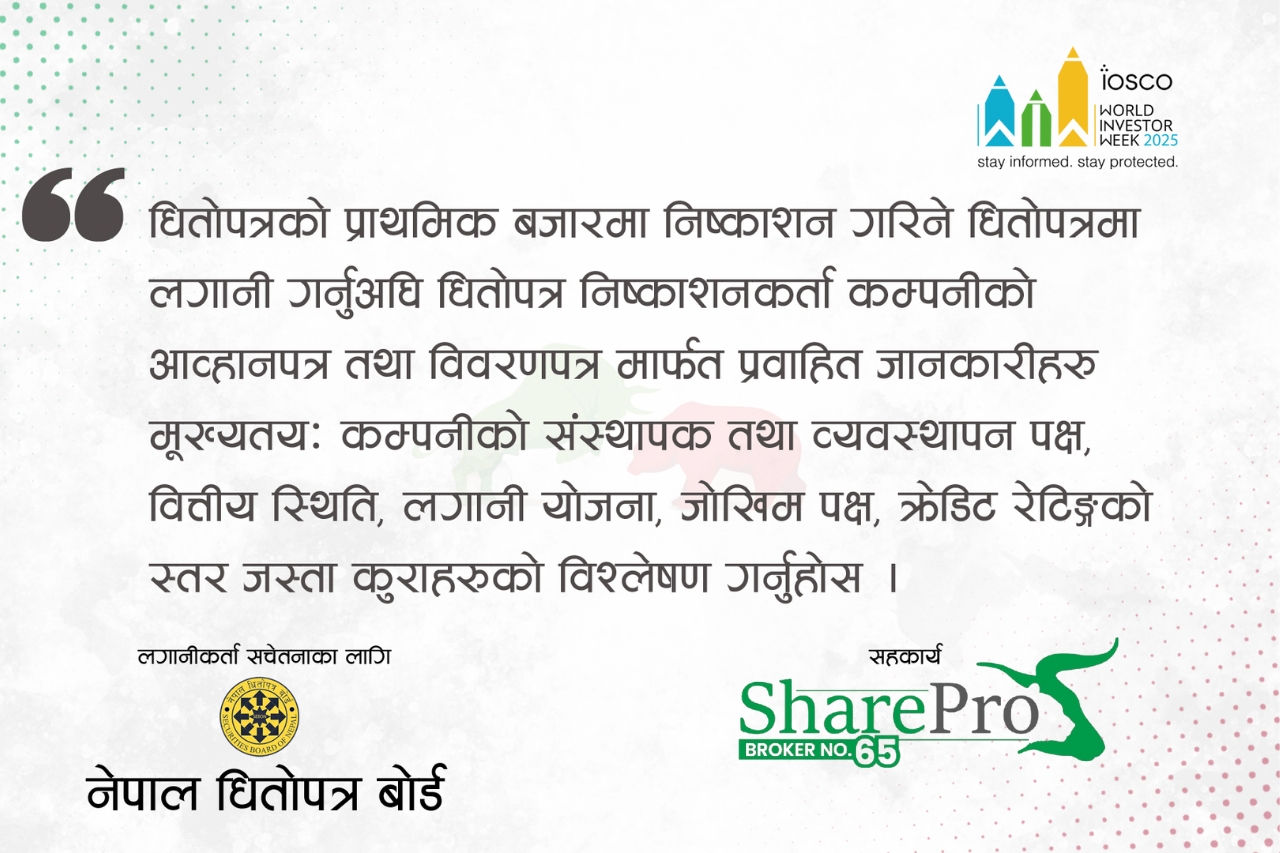Large Inter-Province Disparities in Nepalese Share Market Activity
Tue, Dec 19, 2023 4:47 PM on Exclusive, Stock Market, Latest,

Nepal’s share market has witnessed expansive growth over time, with companies from diverse sectors getting listed on the stock exchange. With the number of demat accounts nearing 6 million, the public’s engagement in the capital market is on the rise. Mutual funds have enabled people with low-risk appetites and limited knowledge to invest in the equity market while also enabling them to diversify their investments. While share market participation has been growing, large inter-province differences exist, underscoring the need to enhance financial literacy in poor-performing provinces.
As per Nepal Rastra Bank’s Financial Inclusion Survey (2022), the percentage of the country’s population holding an investment in shares is 23.9%, while the same figure for debentures is 9.3%. Delving into the province-level numbers reveals insights into the uneven distribution of share market engagement in the country.
In Bagmati, 43% of the people have investments in shares, while 12% have investments in debentures. The same figures for Madhesh are 9% and 6%. The gap between the two provinces is a whopping five times wide for investment in shares, while it is concerningly high for investment in debentures. With Madhesh being the second-most populous province, the issue is amplified in scale.
A similar disparity is observed in investment in debentures, with Sudurpaschim having the highest percentage (18.20), while Koshi performs the poorest (5.54). The numbers for Lumbini, Karnali, and Koshi are all lower than the national average for the usage of the two investment products.
While there are many factors contributing to this inequality, a potential explanation is the varying levels of financial inclusion and financial literacy in the provinces. As per Nepal Rastra Bank (NRB), financial literacy is highest in Bagmati province, whereas Madhesh province scores the lowest. This ranking is mirrored in financial inclusion indicators, as revealed by the United Nations Capital Development Fund’s report. The above facts partially explain the differing experiences of provinces concerning capital market participation.
The disparities are concerning, but they also highlight the potential that remains to be unlocked. By improving financial inclusion and increasing awareness about the importance of investing in financial products, Nepal can progress towards having a developed capital market. NRB’s Financial Literacy Framework (2022) is a positive step, but accelerating and tailoring the interventions at the province level will be crucial going forward.
Article By: Anurag Gupta




